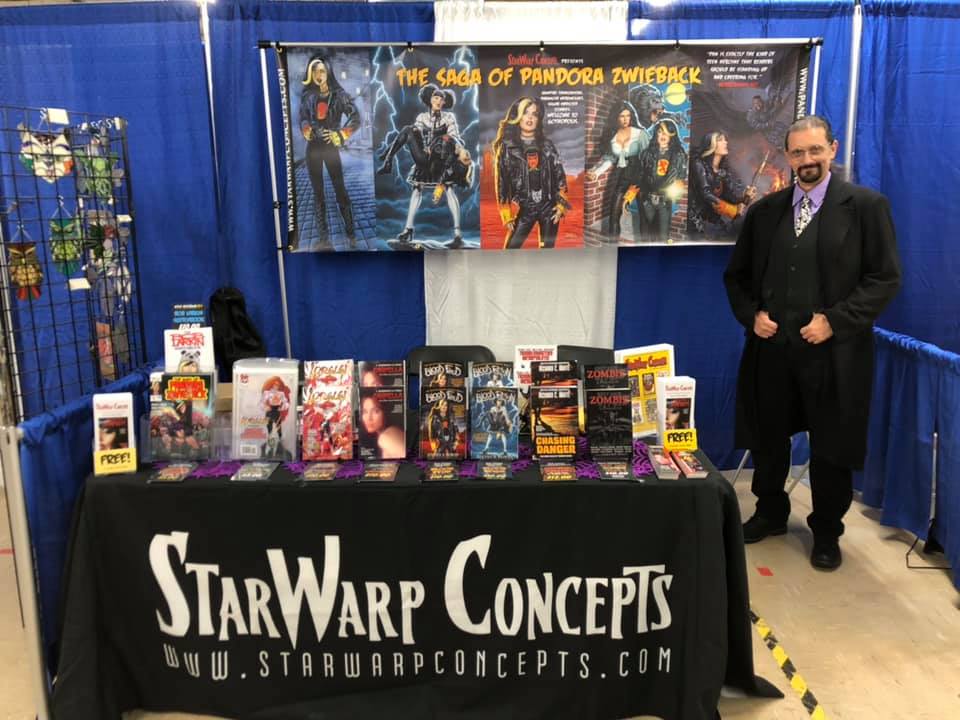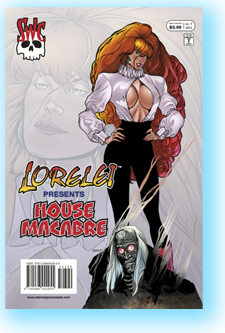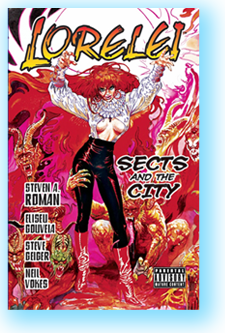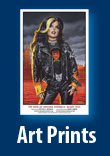It’s interview time, with StarWarp Concepts owner/publisher/main writer Steven A. Roman (that’s me!).

The four-part interview that we’re kicking off today first appeared on the site Write a Revolution, back in 2015, but since WaR is apparently no longer around, I’m presenting it (with some updates) as part of our 30th Anniversary celebration for all those folks who might not have seen it. It’ll give you some background on how The ’Warp operates. Enjoy!
WaR: I believe your company, StarWarp Concepts, has been on the scene for a while now.
SR: Since 1993. But back then it started out as a comic book company that I set up so I could publish a series I’d created called Lorelei, about a woman who winds up getting caught in a supernatural situation and gets turned into a succubus. It was a pretty character-driven comic—no superhero fistfights or explosions or the like—and sold well enough in the nineties for a black-and-white series, but the market dried up when there was a major collapse of comic book distributors late in the decade, leaving only Diamond Comic Distributors. To this day, they’re really the only game in town for comic publishers, but Diamond’s focus is on major companies, with not a great deal of interest in the small presses.
When I rebooted the company in 2010, I mostly moved away from comics and concentrated on publishing dark fantasy, horror, and fantasy books, and the occasional graphic novel.
WaR: Tell us a bit more about it—what services you provide, and where it differs from the many other publishing companies that have been around since the Indie Pub boom.
SR: Well, like I said we originally started out publishing the Lorelei comic, but since 2010 we’ve mostly expanded into straight books—young adult novels [The Saga of Pandora Zwieback], illustrated classic reprints, an artist sketchbook [The Bob Larkin Sketchbook], and a writing guide for fantasy authors [Terra Incognito: A Guide to Building the Worlds of Your Imagination]. Occasionally we still do comics—we published a tie-in to the young adult novel series, The Saga of Pandora Zwieback, and we released the horror anthology Lorelei Presents: House Macabre, and the graphic novels Lorelei: Sects and the City and Troubleshooters, Incorporated: Night Stalkings. I guess that would mean we’re somewhat in a gray area between being a book publisher and a comic publisher, which probably makes us different from most indie houses. I’m okay with that—it gives us two types of audiences to appeal to.

WaR: Lorelei Presents: House Macabre has a great grindhouse feel to it, almost reminiscent of some of Quentin Tarantino’s early work or the Rob Zombie movies. Do certain movies or film genres influence your work at all?
SR: Oh, sure. In the case of House Macabre, the influence comes from horror anthology movies like Trick ’r Treat, Trilogy of Terror, and Creepshow, but it also comes from comics like EC’s Tales From the Crypt, DC’s House of Mystery, and magazines like the original Creepy, Eerie, and Vampirella—short stories with a little twist at the end. Like most of the projects I come up with, it’s a nod to the kind of stuff I grew up reading.
I’d say there’s more of a grindhouse feel to the Lorelei graphic novel that preceded House Macabre: Lorelei: Sects and the City, in which she battles a cult of Elder God worshippers. Unlike House Macabre, Sects is aimed at an adult audience, with sex and nudity and a whole lot of F-bombs. It’s basically a love letter to 1970s horror comics and movies; a few reviewers commented that it’s the sort of story that might have interested Hammer Studios, back in their heyday, which I consider a great compliment.
WaR: Who are the talented artists behind the drawings and where does the inspiration for characters come from?
SR: In Lorelei Presents: House Macabre, we’ve got cover artist Louis Small Jr., who made a name for himself in the 1990s as a supreme “bad girl” artist, drawing characters like Vampirella, Lady Death, and a bunch of others. The four-page introduction (written by me) that starts the comic, in which Lorelei greets the readers, was penciled by Uriel Caton—who once drew a Justice Society of America annual for DC Comics, and now is a top designer for Diamond Select Toys—and inked by “Chainsaw” Chuck Majewski. “All in Color for a Crime” (also written by me) was drawn by Lou Manna, who worked on DC’s superhero comics Young All-Starsand T.H.U.N.D.E.R. Agents. “The Basilisk” (again, written by me) was drawn by John Pierard, who’s mainly a book illustrator. And “Requiem for Bravo 6” was written by Dwight Jon Zimmerman—a New York Times bestselling author, and a former writer of Marvel titles like Iron Man, She-Hulk, and Web of Spider-Man—and drawn by Juan Carlos Abraldes Rendo.

Lorelei: Sects and the City was written by me and has a cover by Esteban Maroto, who’s a comic-art legend with credits like the original Vampirella and Creepy, and a ton of DC Comics titles. The interior art is by Eliseu Gouveia, who’s drawn comics like The Phantom and Vengeance of the Mummy, and most recently we collaborated on an upcoming comic: The Legend of Calamity Jane: The Devil Herself, for gaming company Piko Interactive; Steve Geiger, a former Marvel art director who drew Web of Spider-Man and The Incredible Hulk; and Neil Vokes, who drew comic series like Fright Night, Tom Holland’s Fright Night, and his own Flesh and Blood. The book has a vibe that’s sort of a combination of classic movies like The Devil Rides Out and 1980s Lovecraftian horror flicks like Re-Animator.
Lorelei herself was inspired by Vampirella, Marvel’s Satana, the Devil’s Daughter—who’s a succubus—and 1980s exploitation movies like Abel Ferrara’s Ms. 45, and even the TV show The Equalizer, because New York in the ’80s was a pretty dangerous place to live. When I created her in the late ’80s, I set out to create a sexy action heroine in that sort of grungy, urban setting, but didn’t want to make her a vampire, since that always seems to be the lazy, default setting for any female horror character. Back then, there weren’t too many comic-book succubi who went around seducing men and stealing their souls—I don’t think there are all that many, even today—so that’s what Lorelei became.
That’s the end of part 1 of the interview. Drop by tomorrow for part 2!







Pingback: SWC at 30: Behind the Scenes at StarWarp Concepts, Part 4 | StarWarp Concepts